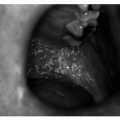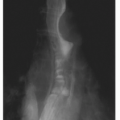CLINICAL PEARLS
There is no age at which expressions of sexuality and intimacy end.
In men, vascular disease is the major pathogenetic factor for erectile dysfunction (ED), with other risk factors being hypertension, hypercholesterolemia, diabetes, and smoking. ED may presage other signs of arterial insufficiency.
Age is not a barrier for sexually transmitted diseases, including human immunodeficiency virus/acquired immunodeficiency syndrome (HIV/AIDS).
The psychogenic overlay that exists despite organic etiologies of sexual dysfunction should not be negated or neglected.
The best predictors of sexual distress in women are lack of general emotional well-being and intimacy with a partner during sexual experiences.
“… Brief is life, but love is long…”
–Alfred, Lord Tennyson
Aging and sexuality (i.e., sexual attitudes, behaviors, practice, and activity) are not dichotomous entities. Sexuality can be conceptualized as a complex interplay of needs for intimacy, affection, connection, self-pleasure, and self-image, as well as the individual’s context related to his or her biology, physiology, psychology, emotion, gender, interpersonal interactions, ethnicity, and community.
1 Not a simple subject indeed. In the 21st century, with greater focus on quality-of-life issues for the aging population and the advances in knowledge related to sexual function from the molecular level to psychosocial and cultural change, as well as novel and emerging pharmacotherapies to enhance sexual function in both men and women, attention is being paid as never before to maintenance and/or enhancement of sexual function in the aging population. Recognition of the impact of sexuality and sexual function as part of sense of self and its impact on every facet of health and well-being is an area of continued and needed exploration. Indeed, the advent of newer therapies for sexual dysfunction in
men has spurred greater attention and focus on sexuality and sexual function in women, which had not previously occurred, although some have railed against what has been termed as
corporate sponsorship of new diseases. Often, it is only the emergence of potential interventions that prompts further study of basic physiologic and pathophysiologic mechanisms. Although our society has often labeled sexual activity in older adults with pejorative terms—
inappropriate, bizarre, and
limited to “dirty” old men and women—these labels are far from reality.
2,
3As the older than 65 population doubles, and one of five people in the United States will be older than 65 by the year 2030, sexual myths and barriers about aging are likely to be shattered. The World Health Organization defined sexual health as:
“the state of physical, emotional, mental, and social well-being in relation to sexuality; it is not merely the absence of disease, dysfunction, and infirmity. Sexual health requires a positive, respectful approach to sexuality and sexual relationships, as well as the possibility of having pleasurable and safe sexual experiences, free of coercion, discrimination, and violence. For sexual health to be attained and maintained, the sexual rights of all persons must be respected, protected and fulfilled.”
4The constituents of normative sexual functioning must be defined by individuals themselves on the basis of experience, expectation, opportunity, relationship, culture, choice, and lack of coercion. Similarly, what can be considered sexual dysfunction—the persistent impediment to a normal pattern of sexual interest, activity, or response—must be individually and personally judged to be a problem by that person, not necessarily by the health care provider.
Despite the numerous studies that focus on coitus as the measure of sexual function, it must be recognized that sexual activity is not just intercourse. Most reports of sexual function have not examined kissing, hugging, touch, orogenital activity, and masturbation, and the myriad other forms of sexual activity people choose to engage in. Few data are available on age-related issues and/or alterations in sexual function for gay, lesbian, and transgender older adults. Masturbation remains a viable alternative for many individuals, and with many in an unpartnered situation as they age, sexual activity for one becomes an increasingly important issue. Environmental issues such as living in nursing homes may also pose challenges to sexual expression. The desire for pleasure, intimacy, affection, connection, and love does not end at any age.
PREVALENCE OF SEXUAL ACTIVITY WITH AGING
Data from the pioneering studies of Kinsey et al. involved relatively few older adults, but even so, 70% of married women older than 60 remained sexually active, and in men older than 80, the frequency of intercourse was approximately once every 10 weeks.
11,
12 The presence or absence of a partner certainly makes a difference when activity is measured as intercourse. The American Association of Retired Persons (AARP) reported that 84% of men aged 45 to 59, 79% of men aged 60 to 74, and 58% of men older than 75 were currently partnered.
13 In contrast, 78% of women aged 45 to 59, 53% of women aged 60 to 74, and 21% of those women older than 75 were partnered. The most recent data from the U.S. Census 2000 on the ratio of women to men can be found in
Table 16.1. Partnership, the relationship with that partner, and partner’s health and selfhealth have a clear effect on sexual activity. The National Council on Aging study noted that 82% of partnered men aged 60 and older and 77% of partnered women older than 60 were sexually active.
14 Data from the AARP study noted that weekly intercourse was reported by 54.8% of men aged 45 to 59, 30.9% of men aged 60 to 74, and 19.1% of men older than 75. For women, the prevalence of weekly intercourse went from 49.6% for those aged 45 to 59 to 24.2% for those aged 60 to 74 and 6.6% for those older than 75.
13 The Association of Reproductive Health Professional survey conducted in 1999 (1,000 telephone interviews with those older than 18 to older than 70), found that 61.6% of men in their fifties versus 35.5% of men aged 70 or older were sexually active.
15 Among women of the same age-groups, sexual activity went from 50.2% of those in their fifties to 18.1% of those aged 70 and older (sexual activity was not defined for this aspect of the survey). The presence of a partner or spouse appeared to be part of the defining issue for activity in all the studies. Optimism about quality of life is helpful with aging, and 67% of men and 57% of women aged 45 and older said a sexual relationship was important
as part of that quality of life. Aging appeared to improve viewing a partner as being romantic and/or physically attractive. However, population-based evaluations indicate that sexual activity tends to decline with age.
AARP did query respondents about particular sexual activities.
13 Kissing, hugging, and sexual touching at least weekly was common in both men and women older than 45, but the frequency of oral sex and self-stimulation was low. However, in those older than 75, the percentage of patients with no activity in the form of kissing or hugging over the past 6 months was 22.3% in men and 67.4% in women, a marked rise in inactivity from previous years. Frequency of sexual touching or caressing, oral sex, intercourse, and masturbation was also found to decrease with age. The National Council on the Aging survey (1998) found that 35% of men in their seventies and 38% in their eighties were satisfied with how often they had sex.
14 Thirty-eight percent of women in their seventies and 26% older than 80 were satisfied with their sexual frequency. Approximately 60% of men and women aged 60 and older who had partners felt their sex life was physically unchanged or even more satisfying than in their forties. The National Health and Social Life Survey of 1,749 women and 1,410 men aged 18 to 59 found 31% of men and 43% of women noted sexual problems.
16Population-based studies have generally indicated that a decline in sexual function occurs with age. Information from the Massachusetts Male Aging study (a longitudinal examination of some parameters of sexual function in 1,085 men aged 40 to 80 at baseline) found that a decline in erection frequency, desire, intercourse frequency, and masturbatory ejaculation occurred in men aged 40 to 70 over the 9-year period of follow-up.
17 In a Pfizer-sponsored cross-sectional study, 27,500 men and women aged 40 to 80 in 29 countries were queried by questionnaire to assess the prevalence of sexual dysfunction and the importance of sex for the individuals and their relationships.
5 Eighty percent of the men and 65% of the women aged 40 to 80 had sexual intercourse in the past year. In men, premature ejaculation (14%), erectile difficulties (10%), lack of sexual interest (9%), and anorgasmia (7%) tended to rise with age, whereas in women lack of sexual interest (21%), anorgasmia (16%), and lubrication difficulties (16%) were noted in this global population.
Sexual interest represents the confluence of hormonal and other physiologic changes with age, such as lower testosterone levels for both men and women, as well as the influence of other concurrent phenomena, such as illness, stress, relationship issues, body image, cultural issues, and self and partner values, which form some aspects of sexual desire. ED is truly a “rising problem” with age in men. It has been estimated that one in ten men worldwide have ED and that it is the most common chronic disorder affecting men older than 40.
18 The probability of severe ED in the 1,290 men in the Massachusetts Male Aging Study tripled from 5.1% to 15% in men between age 40 and 70. In men between age 40 and 70, the overall prevalence of ED is 52% and nearly 70% for those older than 70. Other sexual disorders, such as loss of or hypoactive sexual desire (libido), and ejaculatory disorders, such as decreased volume of ejaculate, can also be found with increasing age in men. It is not clear whether premature ejaculation prevalence increases with age.
In women, a recent small cross-sectional study of those aged 18 to 82 found no differences in female sexual disorders (using the International Consensus Classification) between older and younger women but a high prevalence of problems such as orgasmic disorders, sexual arousal disorders, and dyspareunia in both groups.
19 In fact, cross-sectional data tend to not find age-related increments in sexual problems in women, but the problem is still a relative lack of good prospective data for women (and men) well into their older years, such as those older than 80, and measures that may be independent of partner issues.
20,
21
CLASSIFICATION OF SEXUAL DISORDERS
A variety of classification formats exists for sexual dysfunction but most rely on the
Diagnostic and Statistical Manual of Mental Disorders, Fourth Edition (DSM-IV) (see
Table 16.2) or the American Urologic Association/International Consensus Development Conference on Female Sexual Dysfunction.
22,
23Some revisions in the classification of sexual dysfunction in women are still being undertaken but can be broken down into the areas noted in the subsequent text. Many of the categories in classification systems are artificial because the psychologic/emotional relationship overlay onto organic disease makes the separation into these categories less distinct than we often feel comfortable with in medicine. Not everyone can fit into the neat boxes we (or a consensus conference) design. Further, this classification system, based predominantly on symptoms rather than diagnostic or disease-oriented factors, has some inherent problems. It is also likely that regardless of erectile problems, which can be remedied with a variety of therapies, there remain levels and layers related to sexuality and function in men that also need to be considered. All of the sexual disorders noted in the subsequent text can be lifelong or acquired, generalized, or situational, having single or multiple etiologies. Further, it is imperative not to place values and/or judgments on “normative” function for a given individual. One person’s normal or excess is another’s deficiency state.






